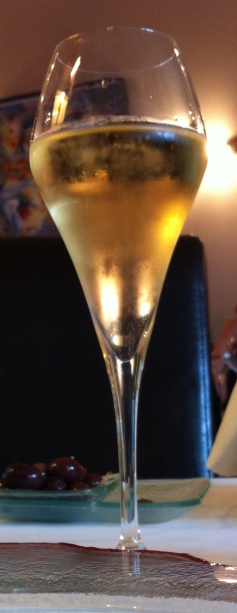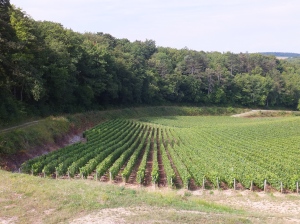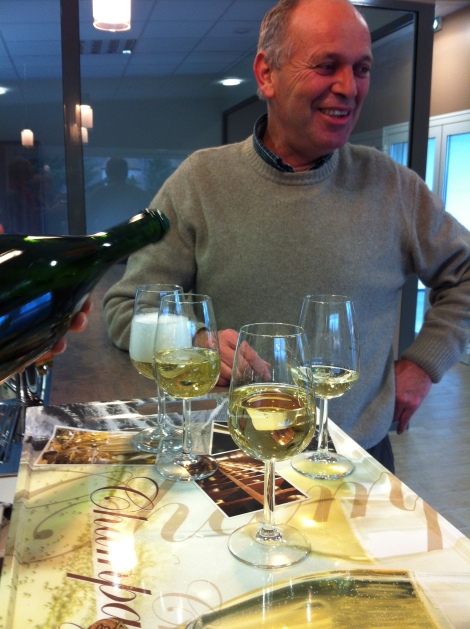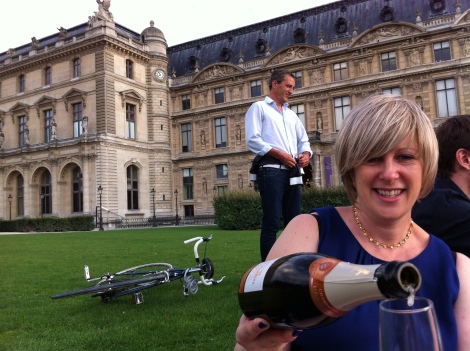 Just how do the bubbles get in there? Several of my faithful blog readers have asked me to explain the steps involved in making champagne. Each step could easily take up its own blog post, but I’ll simplify and just touch on the major points. Even so, I’ve had to split my explanation into multiple posts, or you would be reading late into the night and I know how much you love your beauty sleep. If you’re curious to know more about any particular stage of the process, just let me know in the comments below and I’ll respond, or even write a follow-up post on just that point alone.
Just how do the bubbles get in there? Several of my faithful blog readers have asked me to explain the steps involved in making champagne. Each step could easily take up its own blog post, but I’ll simplify and just touch on the major points. Even so, I’ve had to split my explanation into multiple posts, or you would be reading late into the night and I know how much you love your beauty sleep. If you’re curious to know more about any particular stage of the process, just let me know in the comments below and I’ll respond, or even write a follow-up post on just that point alone.
It all starts in the vineyards. As the French are fond of saying, it comes down to “terroir,” a sense of place. This term refers to more than just the soil itself, although that is one key element. Terroir refers to the soil, the microclimate (wind, rain/hail, daily temperature fluctuations), the exposure to sun (south/southwest is often ideal but not exclusively so), the amount of water from below and above, and any additional influencing factors, such as surrounding vegetation, native grasses, etc. All of these elements have an effect on the winegrapes, and ultimately, on the wine or champagne in your glass.
Let’s start by looking at the land, which must be within the legal borders of the Champagne region in order to produce wines labeled “Champagne.” Don’t get me wrong; there are many delightful sparkling wines made all over the world which deserve a place on your table, but legally, Champagne can only be made in Champagne, France. The vineyards of Champagne cover over 34,000 hectares (84,000 acres) within the 10,000 sq. miles of the region, which lies to the east and south of Paris.
The soil types vary within these 10,000 sq. miles, as is to be expected. My dear friend Scott Burns, newly-retired Professor of Geology at Portland State University in Oregon and fellow whisky aficionado, has combined his profession with his passion for wine and has studied the soils of vineyards all over the world. In Champagne, the soils range from chalk in the Côte des Blancs and Montagne de Reims to clay in the Marne Valley and Côte des Bar, where you may hear terms thrown around such as “Kimmeridgian soil.” This refers to the geologic timescale, or when in the earth’s vast history those particular strata of soil were formed. The chalk soil brings distinct minerality to the wines, and is especially good for growing Chardonnay. The chalk absorbs the rainfall and releases the water to the roots gradually, without risk of rot (“rot risk” – try saying it 10 times fast!). The clay soils are more suited to Pinot Noir and Pinot Meunier, the two other primary varietals used in Champagne.
In and above the soil we find the vines, which are spaced closely together in order to preserve heat in this colder region. Among the regulations overseen by the CIVC are the 4 permitted vine trellising styles: Chablis, Cordon, Double Guyot, and Vallée de la Marne. These days, to aid them in this back-breaking task, winegrowers often use mechanical-assisted pruning shears to avoid carpal tunnel syndrome and similar job-related maladies. Thank God for modern technology! Watch this video of Eric Lebeau from Champagne Lebeau-Batiste pruning his Chardonnay vines in the Chablis style on the slopes south of Epernay:
and relaxing after a hard day’s work with his just rewards.  Although the hardest manual labor I did that day was pushing the shutter button on my camera, I was also richly rewarded with a tasting of their bubblies. Although I enjoyed their Brut Rosé, which smelled of pomegranate, strawberry-rhubarb pie and sage, it was a bit sweeter than the extra-brut rosés I have become accustomed to drinking recently.
Although the hardest manual labor I did that day was pushing the shutter button on my camera, I was also richly rewarded with a tasting of their bubblies. Although I enjoyed their Brut Rosé, which smelled of pomegranate, strawberry-rhubarb pie and sage, it was a bit sweeter than the extra-brut rosés I have become accustomed to drinking recently.
 I couldn’t resist snapping up a bottle of their Brut Grande Reserve, a Blanc de Blancs with a velvety mouthfeel and long, bouncy finish, which I paired with homemade roasted chicken with lemon. Eric explained that he doesn’t put the phrase “Blanc de Blancs” on the label, because French winedrinkers have often seen this phrase used to denote a sparkling wine of lesser quality, not champagne; an opinion I have heard espoused by several champagne producers. Do you recall my explanation of Blanc de Blancs champagne? If not, just click on the link above to refresh your memory.
I couldn’t resist snapping up a bottle of their Brut Grande Reserve, a Blanc de Blancs with a velvety mouthfeel and long, bouncy finish, which I paired with homemade roasted chicken with lemon. Eric explained that he doesn’t put the phrase “Blanc de Blancs” on the label, because French winedrinkers have often seen this phrase used to denote a sparkling wine of lesser quality, not champagne; an opinion I have heard espoused by several champagne producers. Do you recall my explanation of Blanc de Blancs champagne? If not, just click on the link above to refresh your memory.
Back to the matter at hand, namely a deliciously refreshing glass of champagne, the Lebeau-Batiste wine which won my heart was their 2006 Cuvée Sélection Fût de Chêne. A traditional champagne blend of equal parts Pinot Noir, Pinot Meunier and Chardonnay, it spent six months in 6-7 year-old oak barrels, and is not overpowered by oakiness. The nose was redolent of yellow flowers, aromatic and rich, with a forest undertone of moss and mushrooms. In the mouth it was complex and layered, and tasted a bit like pear tart. I “peared” it with several cheeses including a firm, aged chèvre, and shared it with a select group of friends on a lovely summer day in Paris, surrounded by the glory it deserves.
How about you? Have you watched a winemaker training his grapevines in your part of the world? How is it different than in Champagne? Please leave your comments below.
Coming soon…Part II: The Cave

Pingback: Pop Open a Bottle of Bubbly; UNESCO Just Granted Champagne World Heritage Status! | In Great Spirits·
Pingback: Arles Well that Ends Well | In Great Spirits·
Pingback: How to Make a Great Bottle of Champagne – Part 2: The Cave | In Great Spirits·